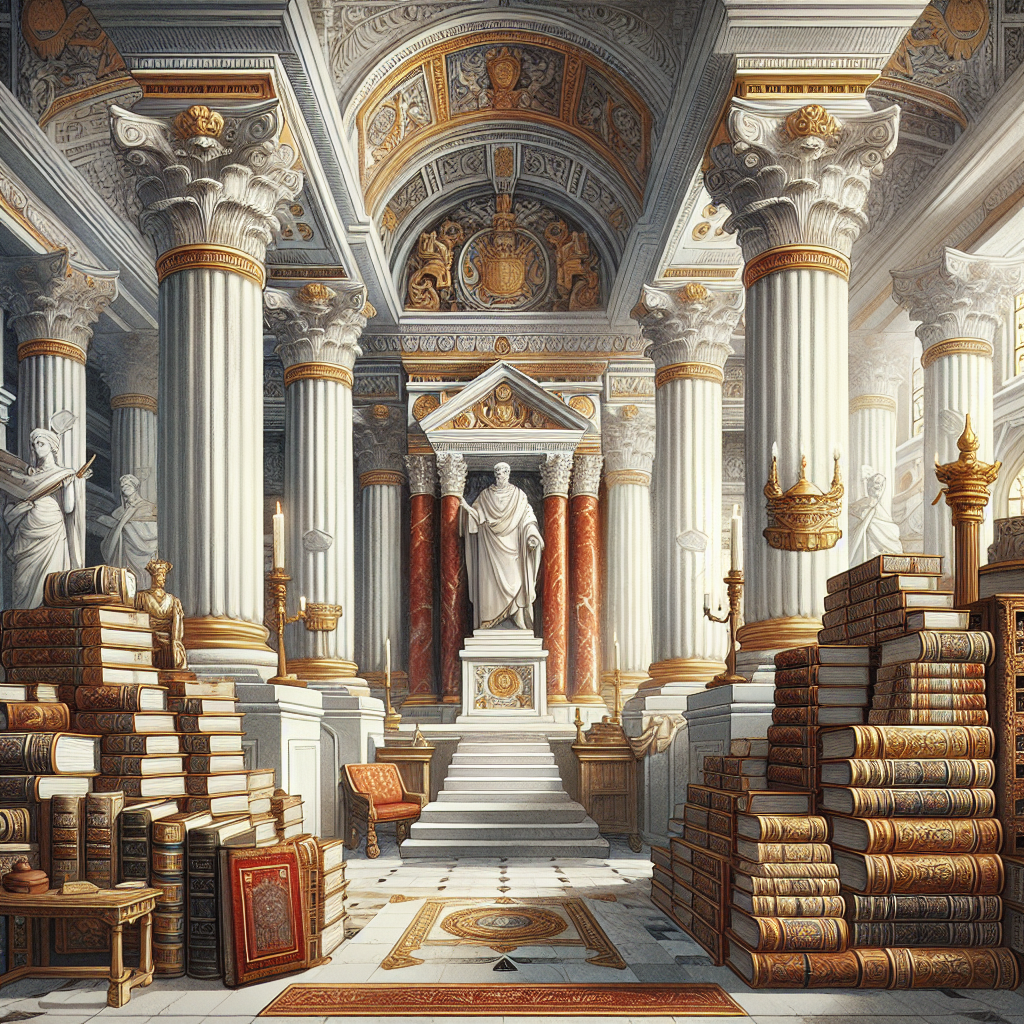Secrets of the Vatican: Hidden Archives and the Power of the Papacy
The Vatican, a sovereign state within Rome, serves as the spiritual and administrative center of the Roman Catholic Church. Known for its artistic magnificence and historical richness, it also cradles a more enigmatic aspect: the Vatican Secret Archives. This trove of documents is often veiled in mystery, drawing scholars, historians, and conspiracy theorists alike.
1. History of the Vatican Archives
The Vatican Secret Archives were established in 1612 by Pope Paul V, although the accumulation of documents began much earlier. Spanning centuries, these archives house over 85 kilometers of shelving filled with invaluable manuscripts, correspondence, and records crucial to the Church’s history. The term “secret” is misleading; it derives from the Latin secretum, meaning “private.” Thus, these archives are more about confidentiality than outright secrecy.
Among the myriad subjects represented are papal actions, historical events, and correspondence from prominent figures. Famous letters from Michelangelo and Catherine de’ Medici adorn the shelves. The archives also detail the Church’s relations with secular powers, including the complex dynamics of monarchies and empires over centuries.
2. Contents of the Archives
The Vatican Secret Archives contain a plethora of documents that span from the 8th century to the present day. Among these documents are important historical records such as:
- Papal Bulls: Official decrees that express the Pope’s authority.
- Correspondences: Letters exchanged between past popes and world leaders, shedding light on political intrigues.
- Trial Records: Documentation related to the trials of various figures, including high-profile cases like that of Galileo Galilei in the 17th century.
- Confidential Proceedings: Meeting records of the most clandestine gatherings where pivotal decisions affecting millions were made.
One notable document includes the 1469 letter from Ferdinand II of Aragon to Pope Sixtus IV, seeking support for the Spanish atmosphere leading to the Inquisition. This document portrays the interactions and influence of secular affairs on Church matters.
3. Access to the Archives
Accessing the Vatican Secret Archives is tightly controlled. Historically, only scholars with specific credentials and research interests have been permitted to research within. A significant change occurred in 2019 when Pope Francis opened the archives pertaining to World War II, allowing researchers to explore documents related to Pope Pius XII’s actions and the Church’s involvement during the conflict. This move not only reflects a commitment to transparency but also encourages historical discourse surrounding potentially controversial topics.
Nonetheless, while the archives are more accessible, certain documents remain classified, known only to a select few within the Curia.
4. The Papal Power Dynamics
The power of the papacy extends far beyond spiritual matters. Papal influence has historically shaped political landscapes across continents. The Vatican has acted as a mediator in diplomacy, forming alliances that have swayed empires and nations.
For instance, Pope Leo XIII, who served from 1878 to 1903, played a pivotal role in addressing modern societal issues, focusing on workers’ rights and social justice in his encyclical Rerum Novarum. His actions illustrated the influence of papal authority on social justice movements.
Pope John Paul II is credited with playing a significant role in the fall of communism in Eastern Europe, particularly in his native Poland. His pastoral visits and firm stance against totalitarian regimes earned him a reputation as a global spiritual leader influencing both faith and politics.
5. The Role of Conspiracy Theories
The Vatican Secret Archives have long been a playground for conspiracy theorists. The dense catalog of historical documents has spurred countless rumors and speculation regarding hidden truths about the Church and its influence in world affairs. Some theorists suggest that the archives contain evidence of extraterrestrial life, hidden ancient texts, or secrets about the bloodline of Jesus Christ.
Despite the sensational claims, the allure of conspiracy theories reflects a deeper public fascination with power, secrecy, and the unknown. Scholars continue to dissect these theories while aiming to contextualize the significant historical facts that the Vatican archives contain.
6. Preservation and Technology
In recent years, the Vatican has recognized the importance of preservation and access. Conservation efforts are paramount, given that many documents are centuries old and fragile. Advanced technologies are employed to digitize and restore ancient texts while preserving their integrity. Digital archiving offers a glimpse into what these archives hold, allowing for broader access without compromising the material.
7. Cultural Impact
The Vatican Secret Archives influence culture across multiple disciplines. They have inspired filmmakers, authors, and artists, infusing their works with narratives drawn from the secrets held within. Movies such as The Da Vinci Code have popularized the mystique surrounding the Vatican, transforming the archives into a modern symbol of enigmatic authority.
Moreover, the Vatican’s rich history and complex relationship with science continue to inspire ongoing dialogue about faith and reason, particularly as technology evolves.
8. Conclusion
The Vatican Secret Archives encapsulate a multitude of historical narratives while revealing the depth of papal power. While often misunderstood, their intricate complexities serve as a crucial resource for understanding the intersections of faith, politics, and human history. Through continued research and exploration, the world may gradually unveil more of the secrets that these ancient walls hold. The Vatican, as a living institution, will continue to evolve, closely tied to the very fabric of global history.





Leave a Reply